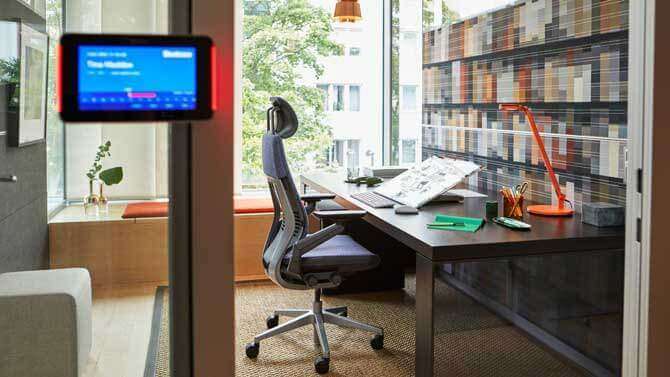The standard workday is eight hours for five days per week. That means 40 of 168 hours each week – 24% – are spent at the office or on the job site.
The office indeed is a second home for many working professionals.
That’s why it is so important for offices to be comfortable and functional for employees. Below are five tips to create an office space you can love:
1. The Desk
A work desk is equivalent to a sofa in the living room, kitchen table in the dining room and bed in the bedroom. It is the centerpiece, and as such, the desk is a central element in office design and style.
A good desk has enough surface area to accommodate technological necessities like a computer, monitor, keyboard, mouse, printer, webcam and telephone. Space for an inbox also is important. Additionally, desks should have a clean multipurpose space for taking notes, reviewing files and eating snacks or lunch.
Sufficient storage also is critical. Files, documents and notes should be kept behind closed doors of a cabinet or drawer. Confidential documents should be locked at all times.
EXPLORE: Desks
2. The Chair
Across all professions, the average American worker spends 42.7% of the workday sitting, according to the U.S. Bureau of Labor Statistics. However, there are substantial differences between occupations. Accountants and auditors, for example, spend 89.5% of the workday sitting. By comparison, a nurse practitioner spends just 37.3% of the workday in a chair.
Much like a comfortable bed is important to get a good night’s sleep, a comfortable chair is a critical component of a productive workday. A good office chair should have:
- A padded seat
- A firm back with lumbar support
- A swivel base
- An adjustable height
- Adjustable armrests
EXPLORE: Chairs
3. Ergonomics
It’s important to create a workspace that is both productive and comfortable. However, the topic of ergonomics often is broached only when HR is involved. That can transpire after an employee experiences a stiff neck, poor circulation, back pain or strained eyes. The key to ergonomics is a proactive approach.
Ergonomics is the science behind design that allows people to work efficiently and safely. For an employer, the benefits to prioritizing ergonomics are wide ranging and include improved productivity, work quality, morale, culture and retention.
Chairs must provide adequate support and comfort, and computer monitors and keyboards must be positioned at the proper height. Poor posture is a contributing factor in chronic pain.
4. Personalize your Workspace
Make the space your own. After all, the office is your home away from home. That’s doesn’t necessarily mean filling the desktop with family photos and children’s artwork. One or two photos is usually OK.
Personalizing a space also can mean hanging artwork depicting your favorite vacation spot, colors or nature themes. A custom coffee mug, business card holder, glassware or tchotchke also sprinkle a little personality into the office.
5. Good Lighting
Lighting is an incredibly important part of productivity. Lighting that is too bright is harsh on the eyes and can cause glares on computer screens. On the other hand, lighting that isn’t bright enough can make individuals feel tired and unfocused.
Many office buildings have overhead fluorescent or LED lighting. Natural lighting can help supplement light sources. In fact, one research study noted an 84% drop in symptoms of eyestrain, headaches and blurred vision when office spaces are optimized with natural light. That same study found that workers sitting close to a window had a 2% increase in productivity.


